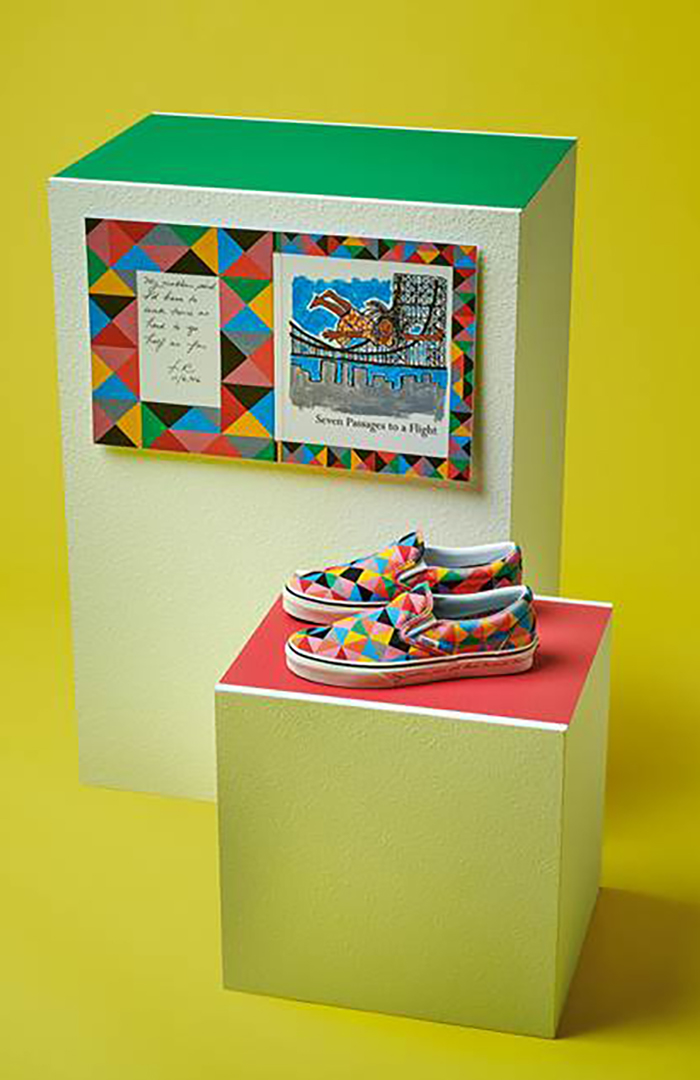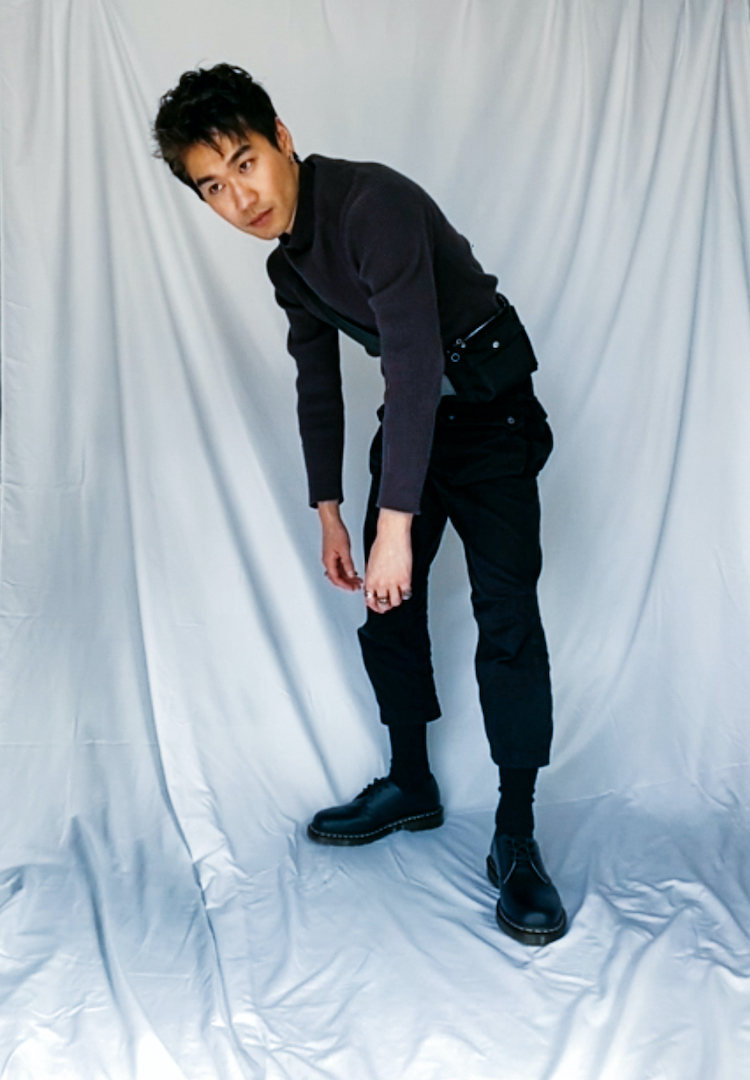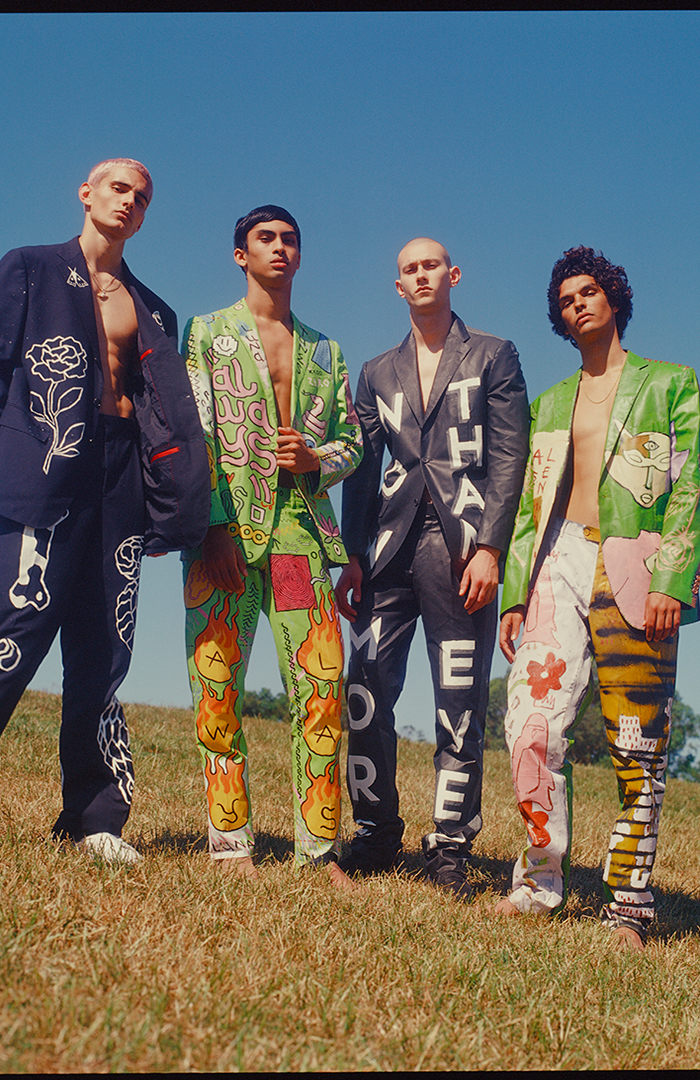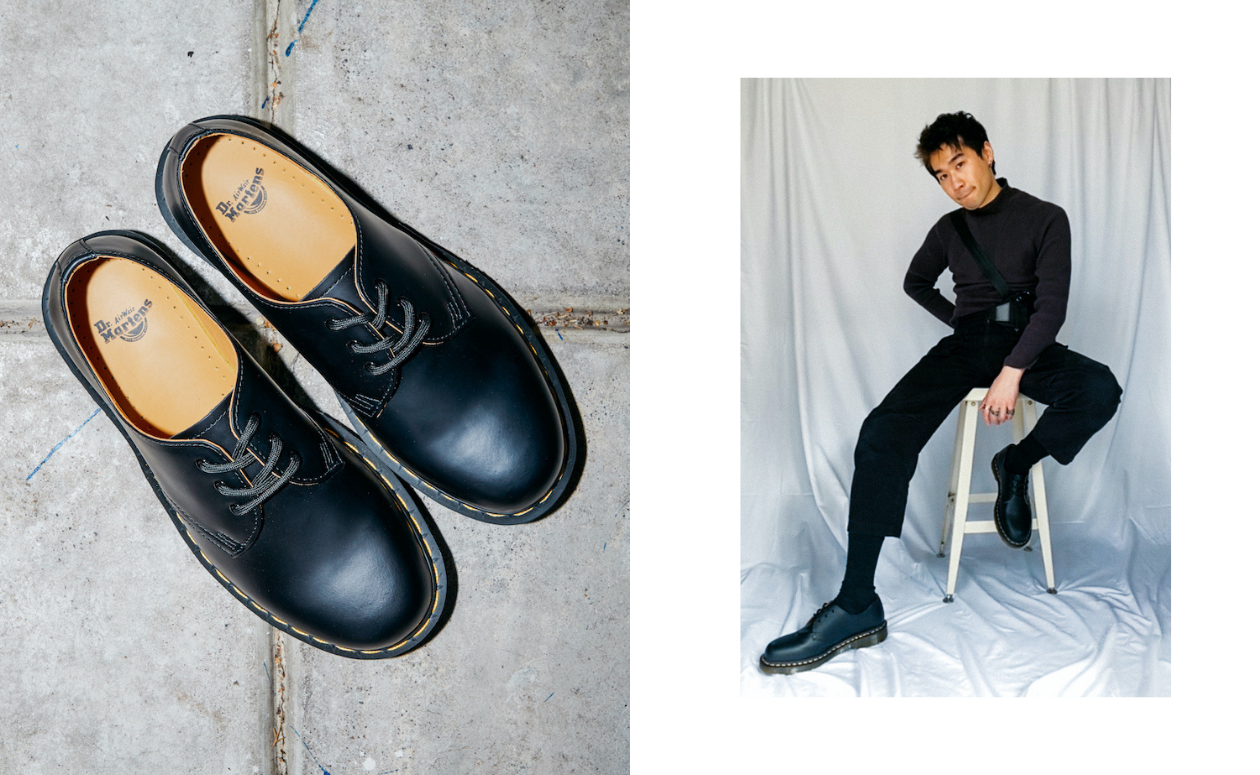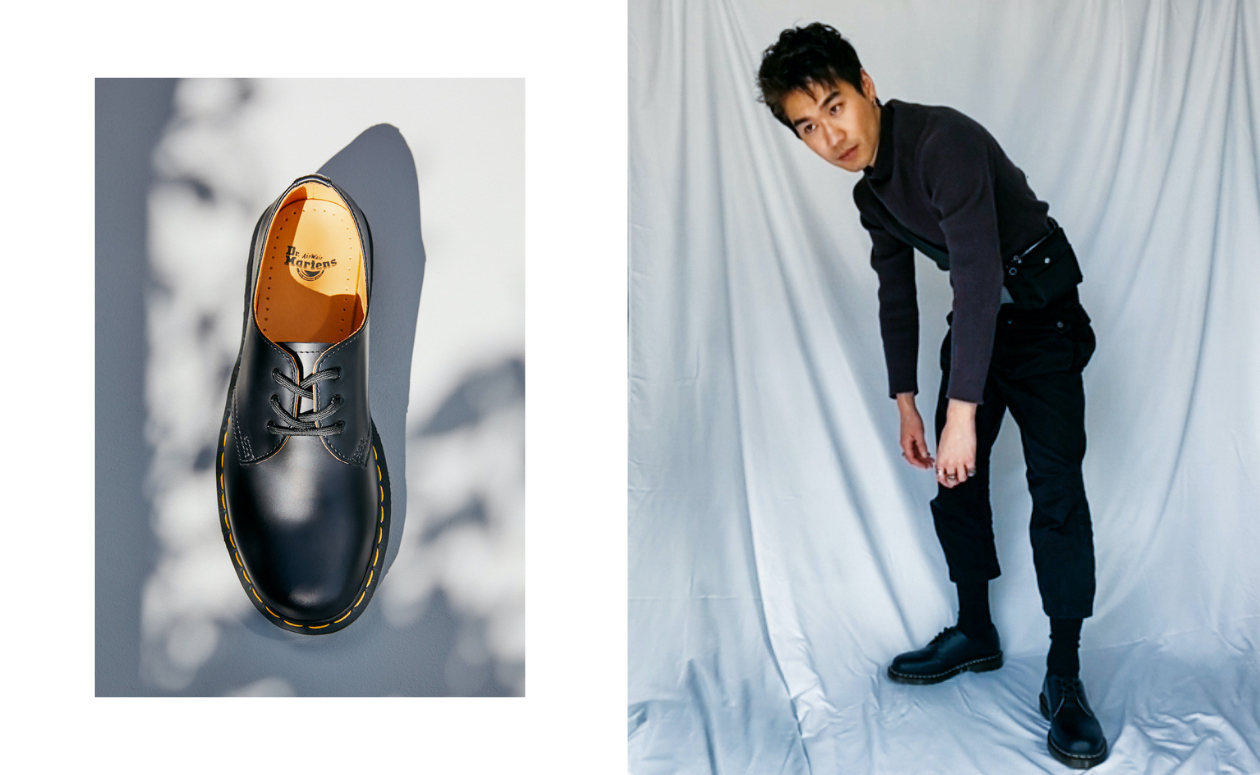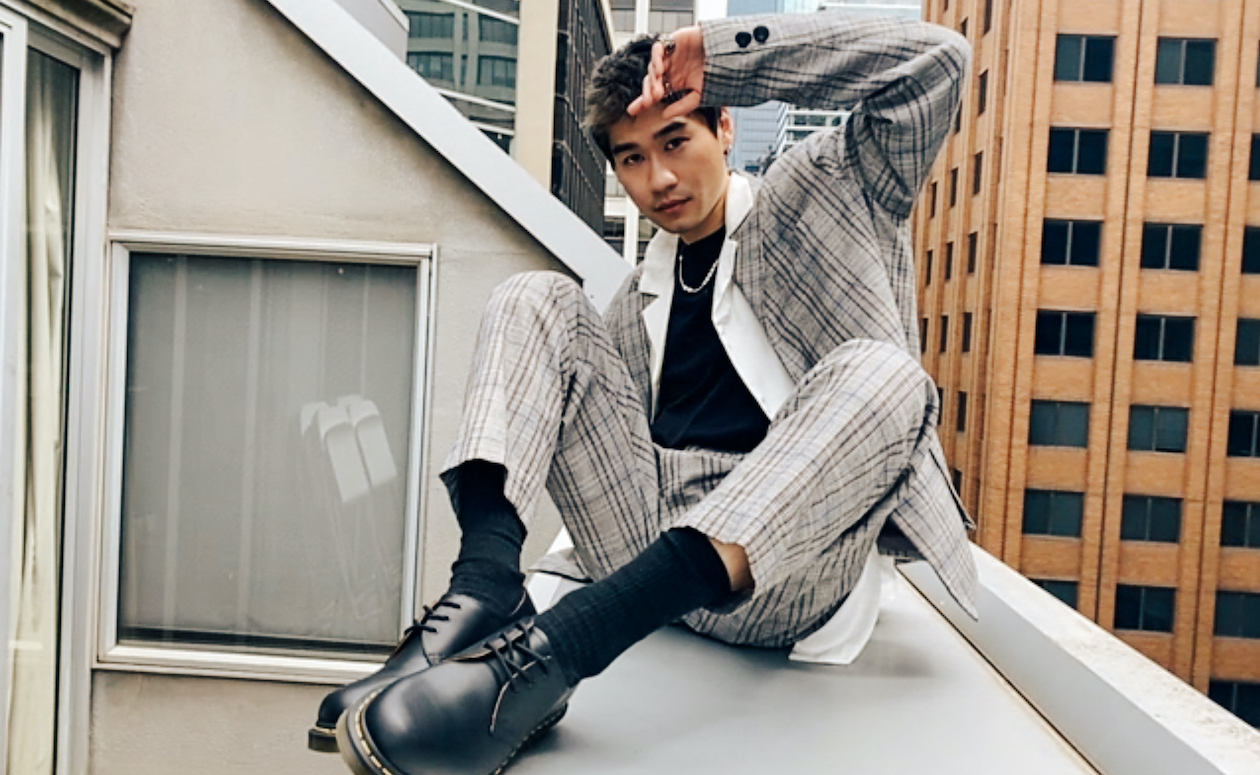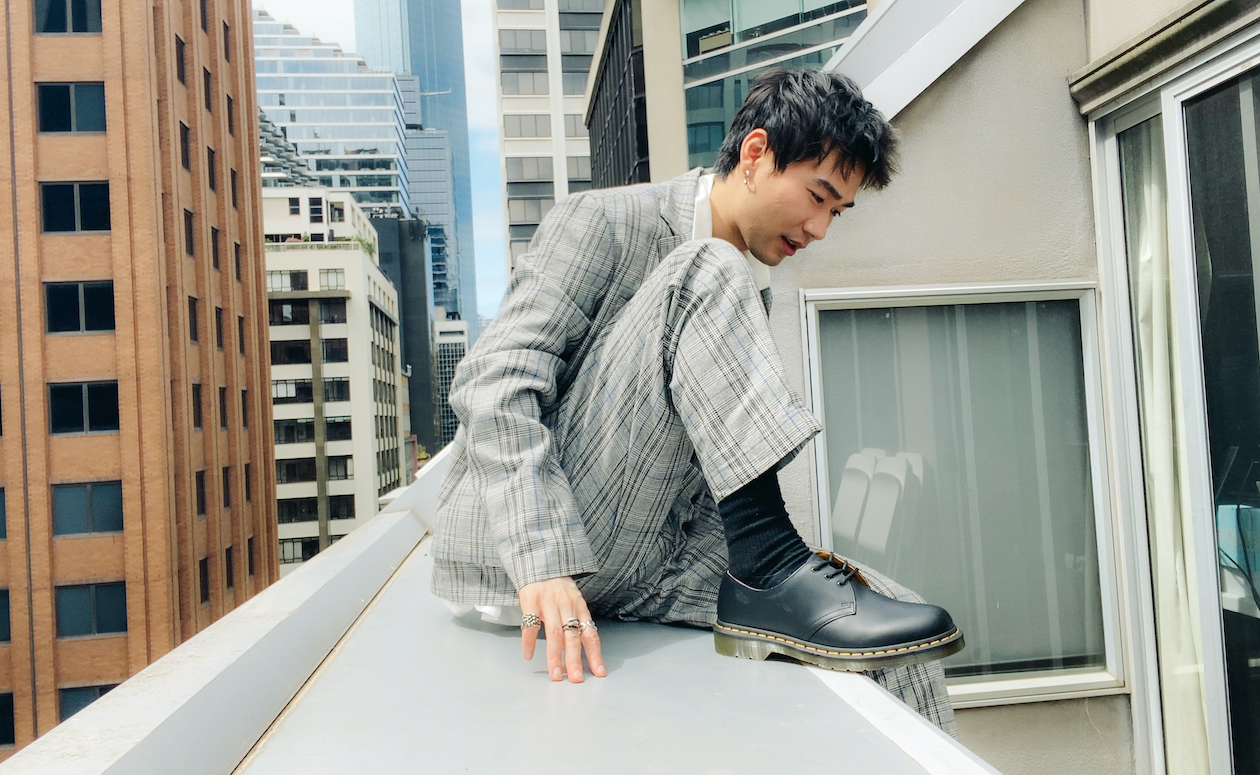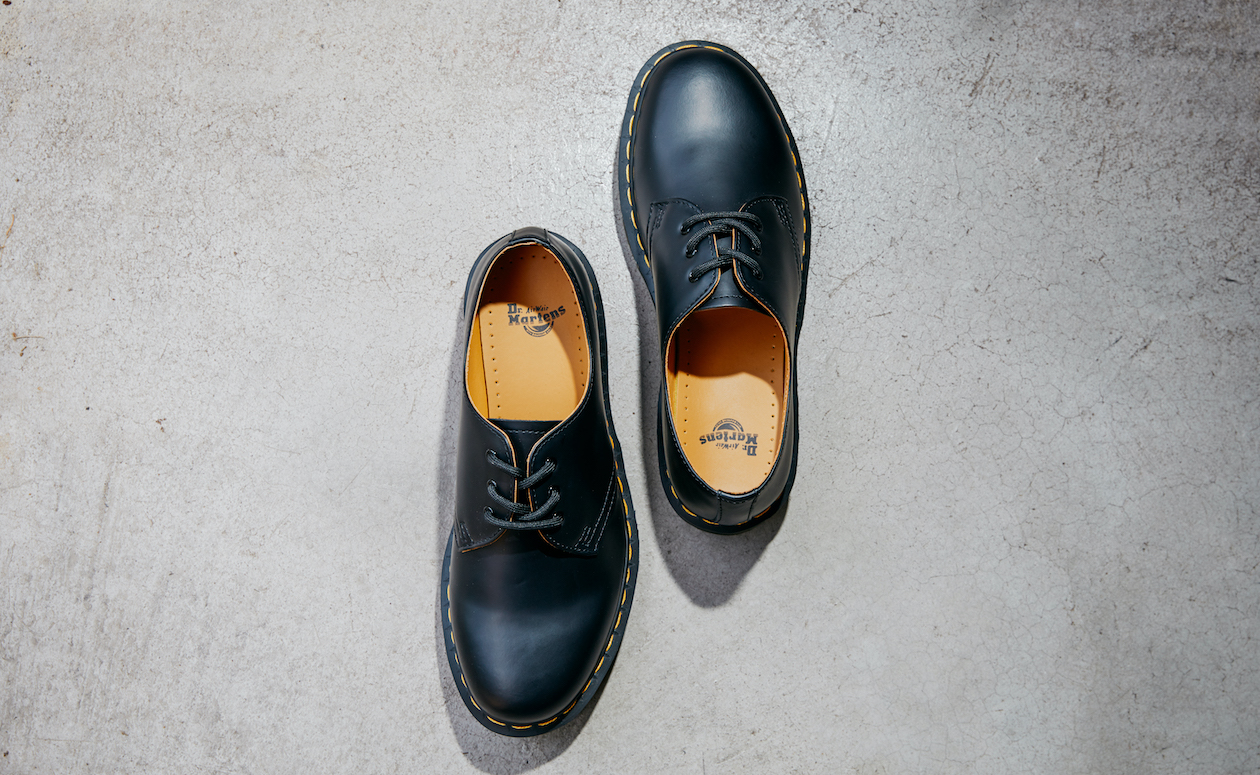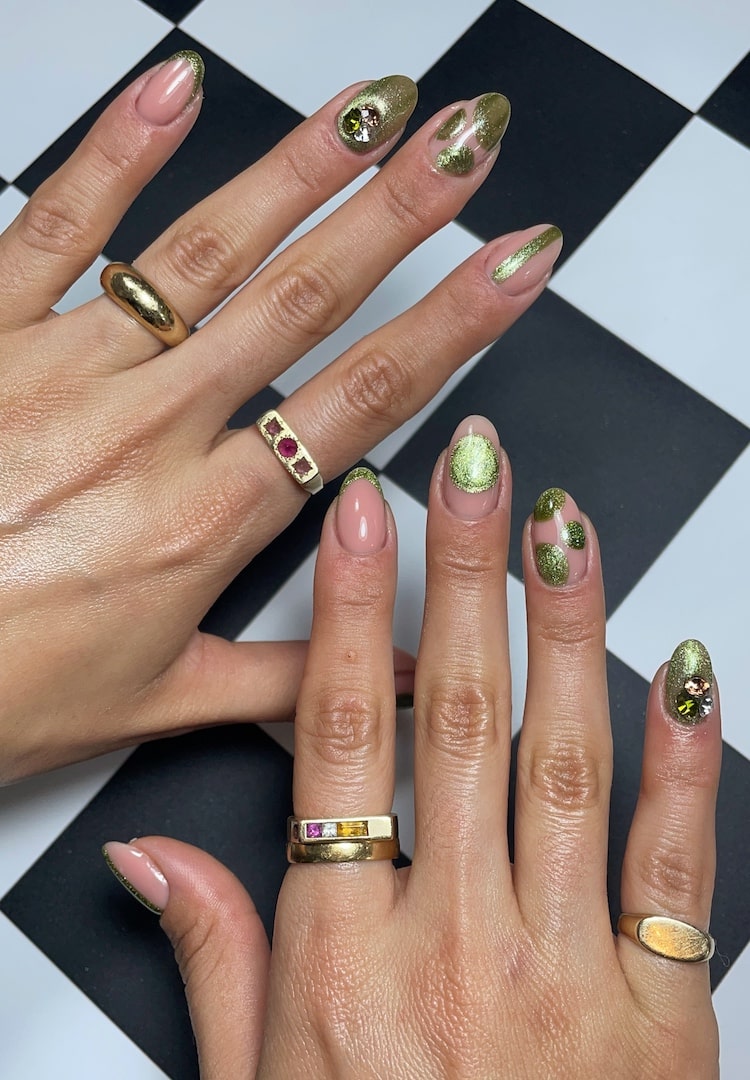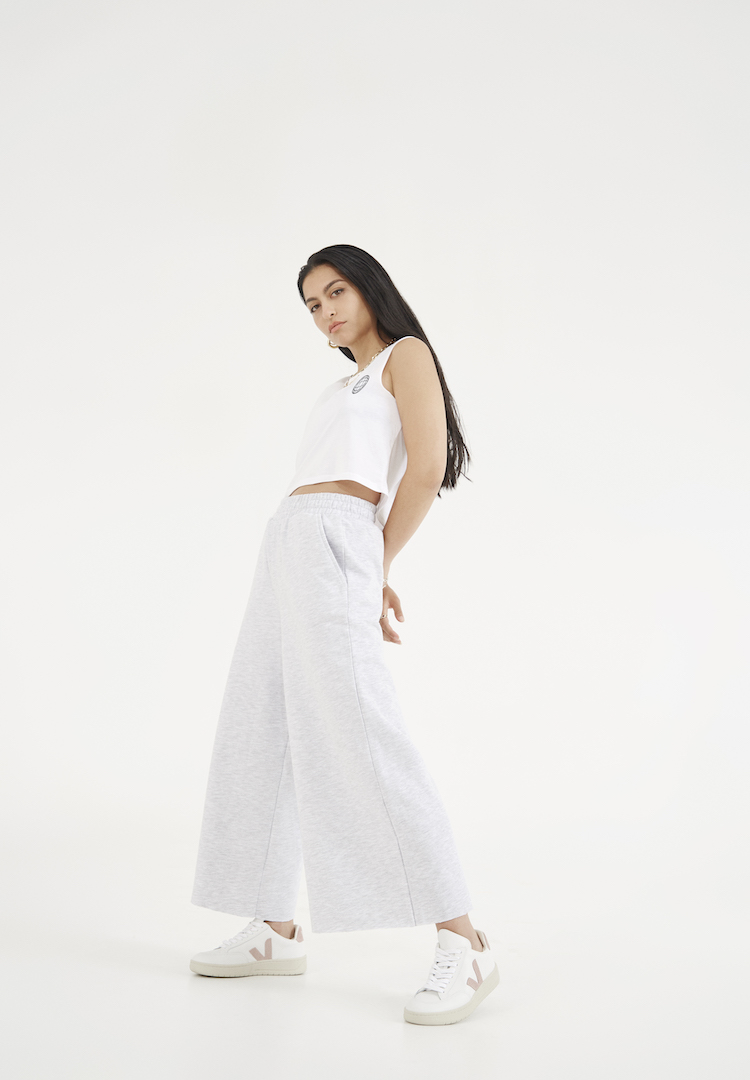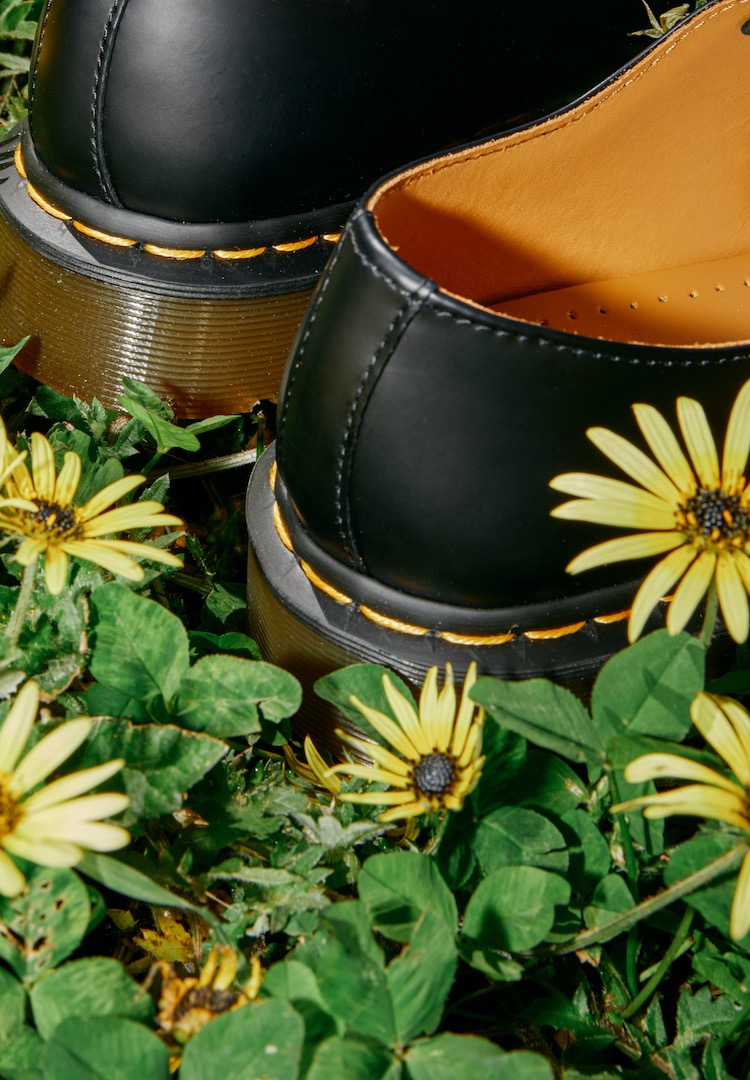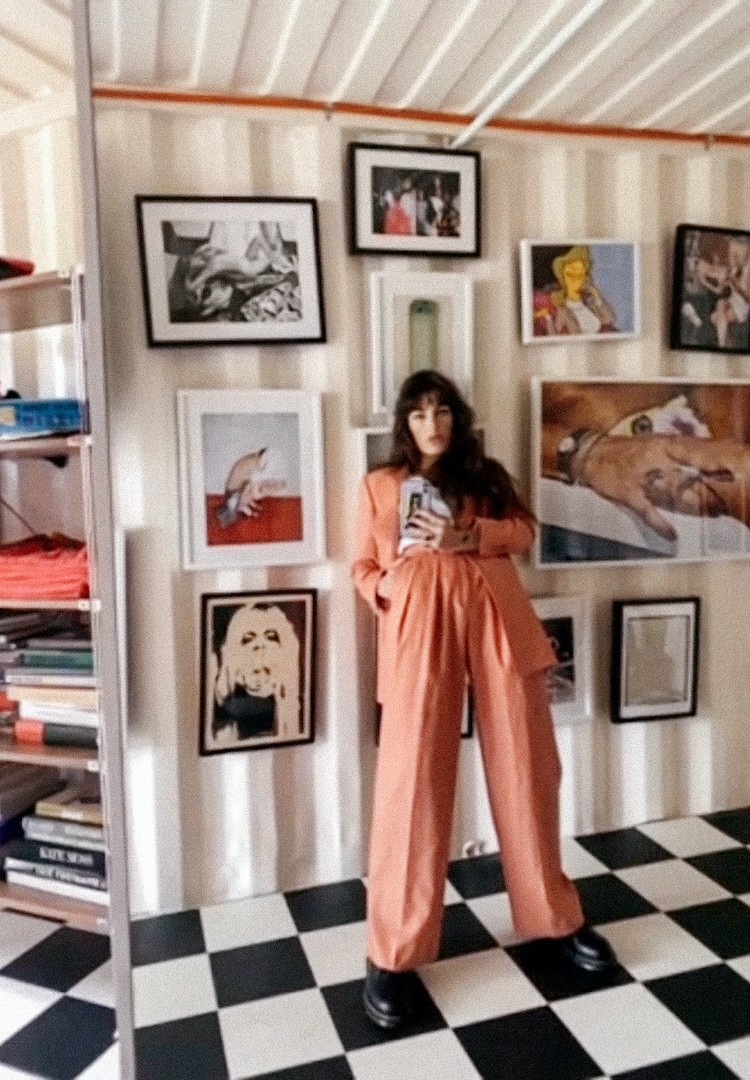How one designer found success in Australian fashion, without ever attending fashion school
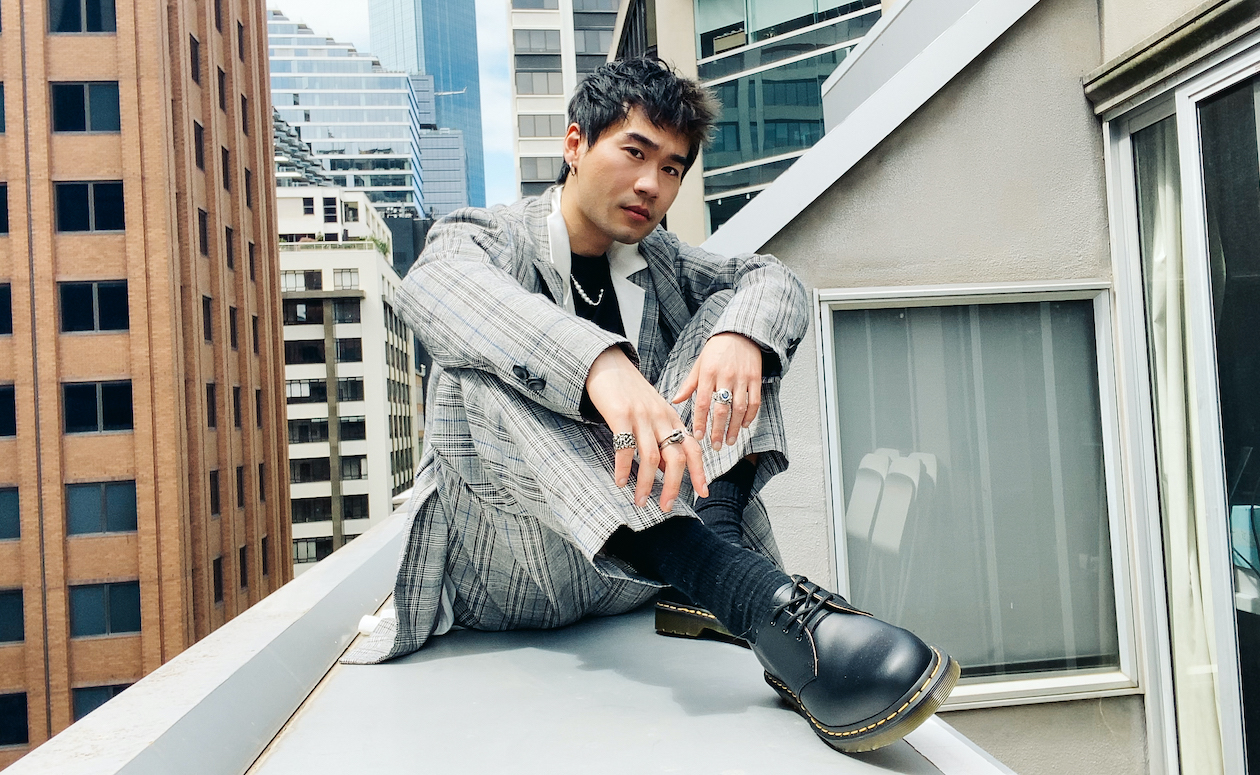
PHOTOGRAPHER – SAM WONG
PRODUCT STYLIST – NAT TURNBULL
WORDS BY MAGGIE ZHOU
“I learnt everything from the ground up.”
Hype DC has been the premium destination for exclusive footwear in Australia for over two decades now. Together with Dr. Martens, it’s celebrating the classic 1461 unisex shoe; the uniform of choice for those who march to the beat of their own drum. This week on FJ, two Melbourne designers show us how they’re rallying against the fashion industry’s status quo through their own creative practice. Here, Rong Jake Chen shoots with photographer Sam Wong on Zoom. He shares how he found success without ever attending fashion school, and how his cultural identity and collaborative approach have culminated in a new project for 2020.
Rong Jake Chen has been moving in and around the independent Australian fashion scene for almost a decade now. I’ve seen his creations strutting down underground runways, hanging on racks in pop-up stores and in sleek campaigns shot in the streets of Korea.
A man of many hats, when describing Rong, the question should be what doesn’t he do – he’s a designer, creative director, consultant, lecturer and project manager. You might know him as one half of Amxander, the Melbourne-based elevated menswear label he departed earlier this year, or from Jonathan Liang, a womenswear label focused on utility-style wear.
While 2020 has been a stretched period of stagnancy and Melburnians, in particular, have experienced a sort of purgatory, Rong is embracing this grey area. Since leaving Amxander, he’s in the brainstorming process of starting up his own solo practice which will explore liminal and fragmented identities. Fittingly, it’ll be focused on the colour grey.
This recurring motif of grey perhaps stems from his cultural upbringing. Back in 2017, he spoke to Fashion Journal and shared that he was the only Chinese kid in school. In turn, he followed the traditional education route set by his parents and achieved a Masters in Business and worked in consultancy.
“I thought, ‘Hey, hold on, why can’t I have both?’ I was always great at art, and felt it was such a shame that I never nurtured my wild, creative side,” he said.
It’s his ultimate pursuit of creativity that makes Rong the perfect candidate for this series. Dr. Martens stands for rebellion, innovation and marching to the beat of your own drum, while Hype DC offers a premium, considered experience for its clients. Rong sits nearly at the intersect of both.
The duality – and contrast – of his creative and business side actually led him take on a second name. While he uses Rong for his creative work, he adopted Jake for his business side.
“It’s funny because I used to avoid using [Rong], and I came up with Jake as a way to Westernise myself when I was in business school. It almost feels like a quiet protest to yourself when you have to adapt. But as I get older, I embrace my migrant heritage a bit more.”
While it may have been something he used to shy away from, his split identity has now formed the nucleus of his work.
“When you come from a background of a merged cultural perspective, you draw from both narratives. That’s where I think our cultural blueprint comes from, it’s about regurgitating what is existing and creating a new dialogue,” he explains.
Complementary to this is how he harnesses the power of collaboration. H-ours is his ongoing project, which sees Rong focus on community and bringing people in Melbourne’s fashion industry together. Project one saw the creation of a pop-up store last December, and now project two is centred around re-engaging the independent Australian fashion scene post-COVID. Dubbed Resilience, it features fashion designers such as Verner, Shhorn and Ffixxed studios.
“Essentially, a lot of my friends had cut orders because of COVID [which] resulted in a lot of fabric on-hand, or deadstock. So, we’re using this platform as a way to create new objects from this deadstock, allowing designers to explore their COVID experiences through an artistic format and also allowing them to test new market categories,” he says.
“On the other hand, I’m hoping that it brings the fashion community together, as well as educating the masses when it comes to understanding how dedicated and intricate independent brands are to run.”
While sustainability is undoubtedly part of the fashion conversation, Rong doesn’t believe the pressure of sustainability should be placed on independent designers, especially as most already prioritise ethical production and make limited quantities.
He points to mass manufacturing as a significant downfall of fashion, and while smaller independent designers might not be responsible for this, they can help lead a dialogue about it to hopefully influence the wider consumer market to adapt. From a business perspective, it can also help a brand holistically.
“Sustainability from a smaller brand perspective is about being smart with how you produce – and reducing cost – so there’s a benefit across the whole board,” he says.
As we chat, I become increasingly curious about Rong’s non-traditional way of making and being. He doesn’t seem bound by fashion’s strict rules of production, and has embraced his culture and his community more than anything else.
“I think [it’s] because I started from an outsider’s perspective. I didn’t go to fashion school, I learnt everything from the ground up, I learnt from friends,” he explains.
“I found the community and cultural perspective of fashion [is] sometimes trump[ed by] the general things in fashion. For example, technical aspects I learnt from books, but the cultural perspective I had to learn through interaction.”
Fashion is led by experiences and by connections, not theoretical frameworks and patternmaking. It’s what breathes life into Rong’s designs.
Shop Dr. Martens from Hype DC, available in-store and online now.

